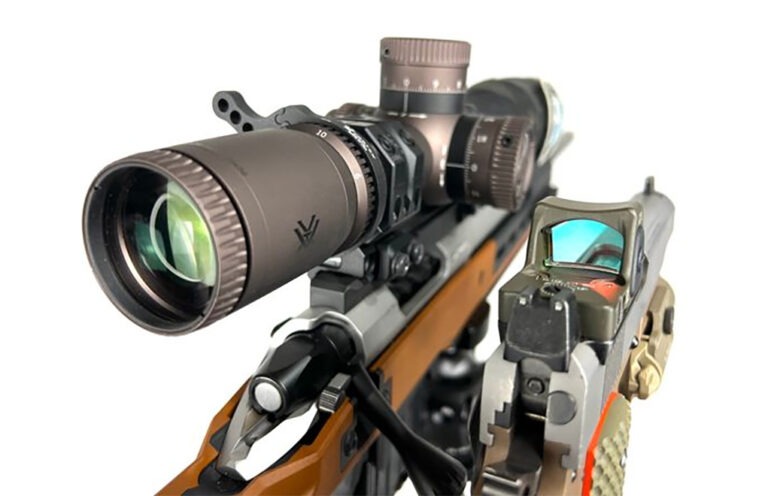
Practicing your long-range pistol shooting at 100 yards will make 25 yards seem like point-blank range.
In creating this article, I originally imagined it would be an interesting how-to for stretching the legs of your optically equipped pistol. While I did make some interesting observations in the process, handguns—even like the one I’m using—aren’t designed to be fired at these distances, and a very dangerous situation can present itself to you and others if extreme caution isn’t exercised. It’s hard to shoot over a berm with a handgun bullet, but it’s very easy to skip them off the ground if you weren’t conscious of the drop. Any time you can’t safely stop a bullet, you’re asking for trouble. In the end, I didn’t walk away with the assumption that this was in any way practical with 9mm, .45 ACP or even 10mm Auto.
For this reason, I’ve included a recommendation on how to safely zero a pistol for longer distances; however, I don’t recommend you try this at home or at your local range. I was able to make some (not as many as you think) hits to a maximum distance of 500 yards, but, in reality, 200 yards with a proper zero is about as far as I feel is safe to go. I observed every precaution in creating this article.
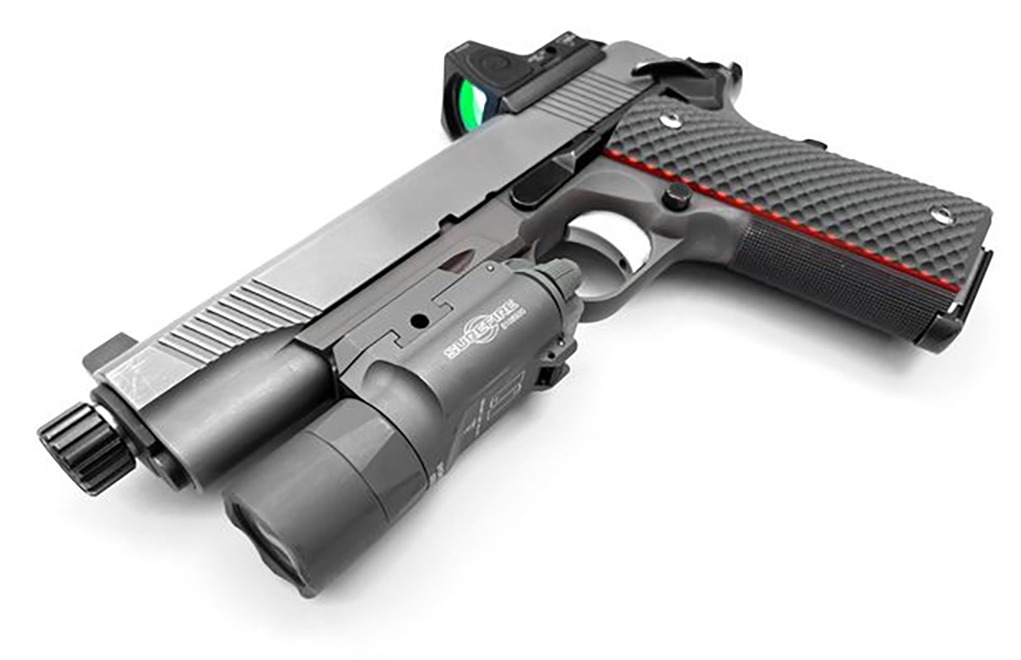
Because virtually all dot-style optics are just that—a dot floating inside of a lens—there’s no real indicator as to where to hold or a means to estimate range. As such, most people tend to zero these optics for the ranges they expect to shoot at or try to create an average distance to take advantage of a given cartridge in point-blank range.
This is very common in rifles, and you’ll typically see different types of zeros being discussed and how they best take advantage of a given bullet’s trajectory. In the carbine world, we usually see a discussion on 100-yard zeros versus 25- or 50-yard zeros … and at what point the bullet’s trajectory rises above and falls back into the line of sight. Point-blank-range zeros aren’t a very good way to go on a handgun, as drop is significant in most cases. It’s far better to know your exact zero at all ranges and even dial in for it, as crazy as that sounds.
Horseshoes and Hand Grenades
All of this comes down to one simple word: consistency. Handguns are among the least consistent types of guns when it comes to accuracy. Across the board, it’s rare to find a handgun design capable of accurate shooting from offhand beyond 50 yards. Using a supported position, it’s not difficult to hit IDPA-sized targets at 100 or 200 yards. If you get into a stable, leaned back sitting position with your hands and elbows locked into knees, just like Elmer Keith taught us, you can shoot quite accurately at 300 yards and beyond. (When I talk about accuracy here, I’m talking about physically contacting the target, not X rings.)
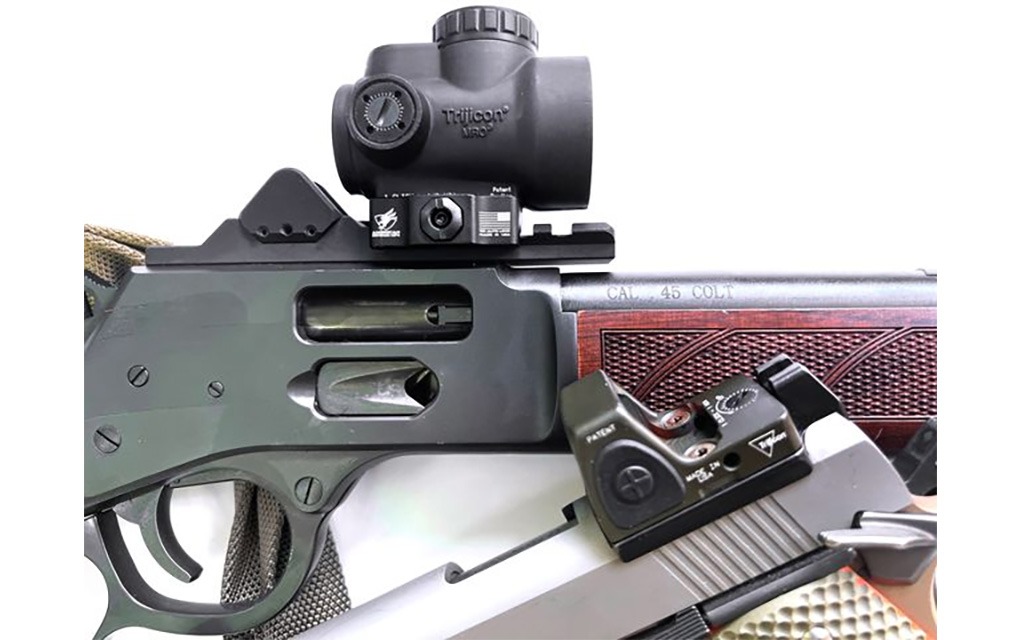
A large reason why handguns aren’t very accurate (compared to rifles) comes down to how they’re built. It’s right there in the name. Anything designed to fit in your hand without a shoulder support or ability to be consistently slung up is never going to deliver its maximum potential. Human error is more than half of the problem; you’re never going to be able to be as steady with any pistol as you are with any rifle.
The 1911 is widely considered to be one of the most accurate designs ever made. Even at that, the aiming interface isn’t directly attached to the rigid structure in which the barrel is housed. The sights, slide, barrel and frame are all separate pieces on most handguns. Your accuracy with a red-dot sight is going to come from the consistency of the lockup between all of these parts when the slide is in battery.
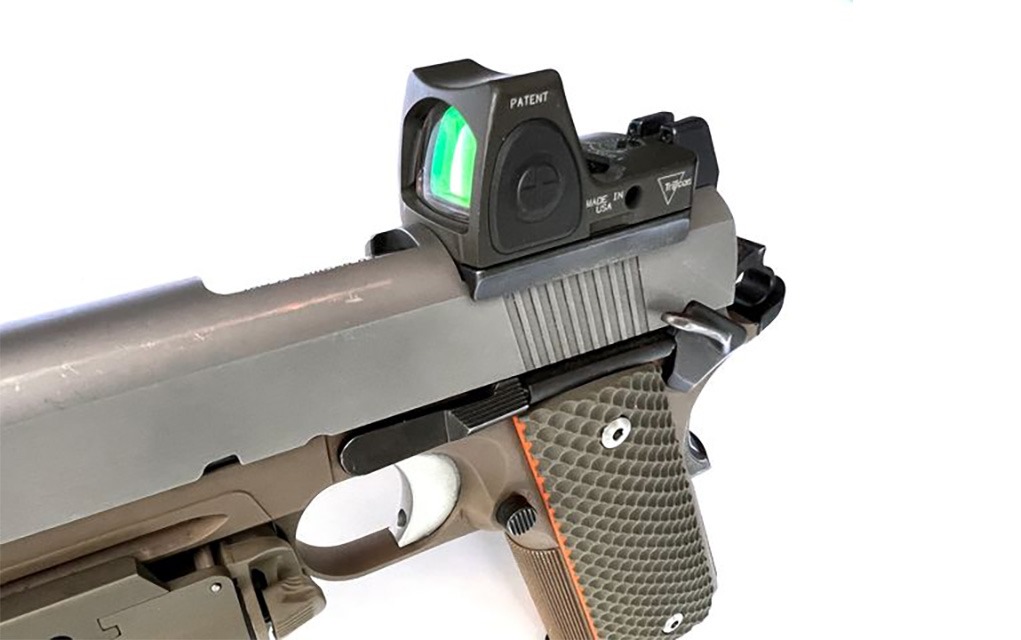
From here it gets more complicated. Adding things to the slide, such as an optic, can increase weight. While this might seem insignificant, I’ve noted that all guns of traditional design that I’ve tested have benefited from a much heavier recoil spring when using a slide-mounted sight. I do believe there’s a correlation between added weight in the slide and the need for greater spring weight. In my own guns, I’ve typically moved to a 20- or 21-pound spring for shooting .45 ACP using a dot sight. Accuracy is likewise benefited with a higher spring weight.
Another significant note is the addition of frontal weight when it comes to shooting with a dot. Again, while it might not seem significant, the addition of a flashlight or suppressor seems to increase the accuracy and overall utility when it comes to dot shooting. You’re probably correct in assuming that adding mass will make for less movement in the hand during firing. I noticed that there was a significant increase in hit likelihood with the light I use attached, versus without. Anything that’s attached can have a dramatic impact on performance. Again, this is all for fun, I really don’t expect serious competitors or tactical types to start looking to shoot handguns at long distance. I hope.
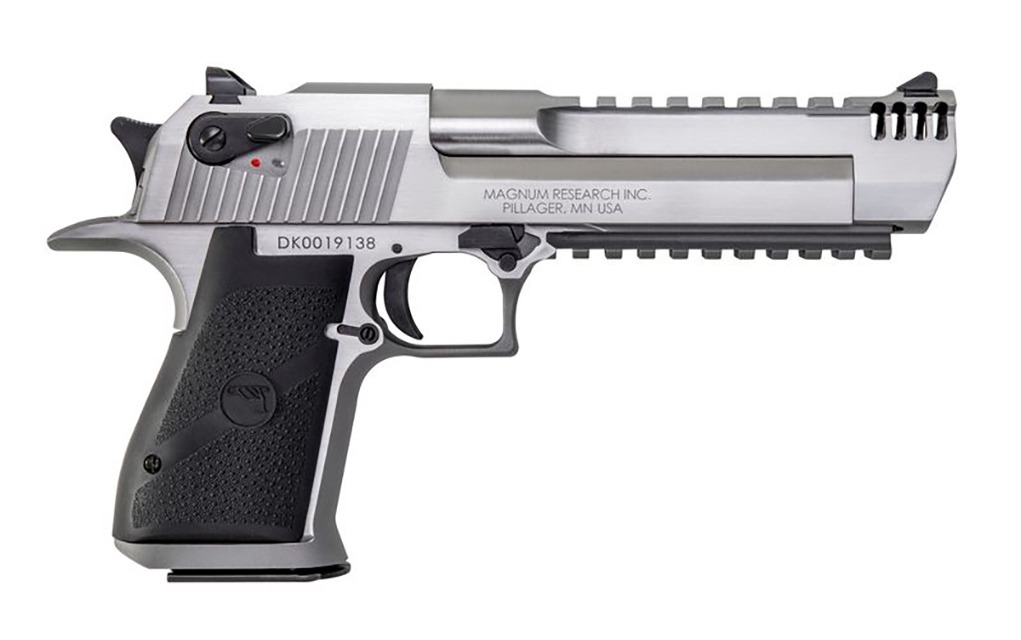
Moving on, you may be wondering what type of accuracy you need on paper at close range to be able to determine if you’ll do well at longer ranges. At 25 yards, you should be printing five-shot groups at 2 inches to be able to contact a target half the time at 300 yards. Basically, if you can hit a playing card five times in a row seated at the bench using your optically equipped pistol, you likely have enough mechanical accuracy to get the job done, however you’re still only halfway there in the equation.
Note that a 2-inch, five-shot group at 25 yards is the equivalent of 8 inches at 100 yards—a tall order for most handguns. Keep this in mind going forward: As distance increases, you can expect a relative group size of 16 inches at 200 … even if your dot is 2 inches across at that distance.
Zeroing a Pistol for Long Range
Consistency here is an interesting topic. Optical sites on handguns allow for a much wider range of adjustment than iron sights. Unlike most pistols equipped with adjustable iron sights, optical sights can be much more adaptable to rifle-shooting styles in that they have a known and consistent size of the aiming point, and consistent mechanical adjustments. An example of this is the RMR site that I used for testing in this article. This is a 1-MOA dot unit (RM09) and has 1-MOA adjustments. It couldn’t get easier than this.
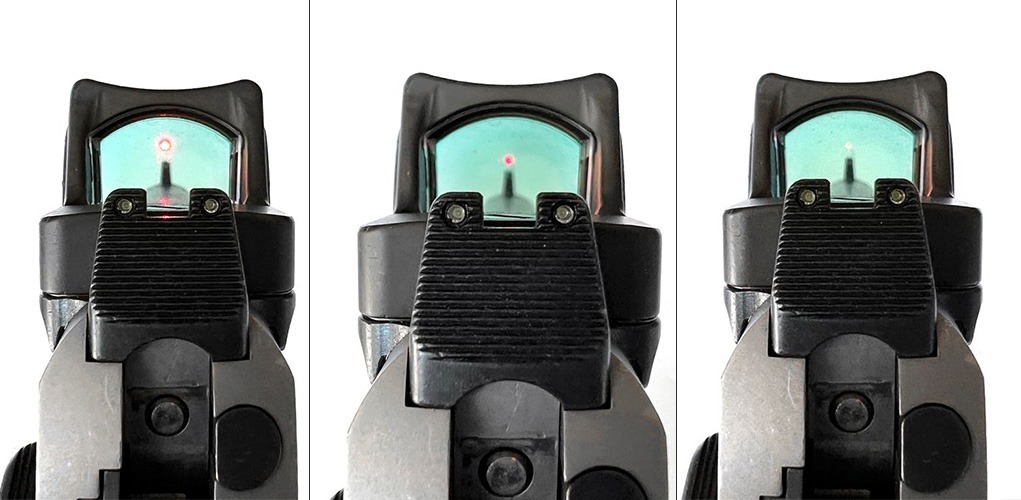
I find that a 2-MOA dot is about the biggest you can go while still being able to aim precisely. In the case of a 2-MOA dot, you’d be looking at an aiming point size of 10 inches at 500 yards. At 1 MOA, a dot is going to represent a 5-inch circle at the same distance. This might surprise you, but it’s very easy to hold on an IDPA target at that distance. In fact, you can even become somewhat proficient with range estimation using dot size alone. You can think of it as a rudimentary rifle reticle given that it behaves like a first-focal-plane scope. There’s one problem that you were going to run into, though, and that’s optical distortion and parallax, which is why zeroing is going to be different than with a rifle.
When using a rifle, it’s common practice to dial or hold on the estimated point-of-impact. If you know that you’re zeroed for 100 yards, and you know the velocity and ballistic coefficient of your bullet, you can plug all of that into a calculator and get a solution. From there, you go to the actual distance and test fire, wherein you might need to make small corrections. With an optically equipped pistol, you’re going to want to do all of your general adjustment at a short, known distance, such as 25 yards.
The trick to getting this to work correctly is to use a bastardized combination of precision rifle math and redneck mess-around. One of the problems with ballistic software is that it rarely has options for a handgun. And why would it?
Running Numbers
I used Hornady HAP bullets in .45 ACP for most of this in reloads. I load them a bit hot into +P territory, so I knew my velocity was 950 fps with an SD of 20 fps. That standard deviation number is going to be extremely important later on. The B.C. of that bullet is a paltry .188. Knowing speed and B.C., you can actually start to work it out in open-ended calculators.
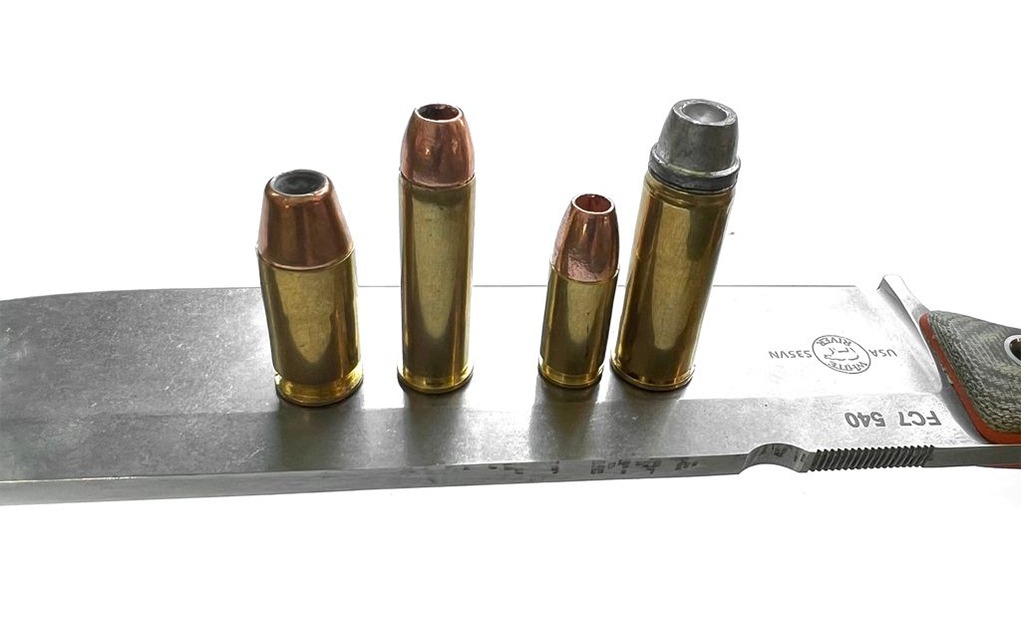
At this point, you’ll want to begin the zero confirmation at your chosen distance. Because we have a 1-MOA dot and a 1-MOA adjustment, things can be streamlined quite well. The reason I plug numbers in at close distance is for safety reasons. If I know that my gun is shooting consistent 2-inch groups at 25 yards, I can more easily move that group as opposed to trying to adjust for the MOA of the gun while also trying to figure out the MOA of the sights. In this way, I can more easily confirm the accuracy of my adjustments on paper before taking them to longer ranges.
Interestingly enough, the loads used for this article required an elevation increase of only 9 MOA to drop them into the center at 100 yards. After testing and confirming at short and long distance, I was happy with the 100-yard zero and began to move out farther. I chose to zero for the center of the group, not the tightest concentration. As you can imagine, this is a game of averages past 50 yards.
Past 100, I began to use the target itself, having a known size, as part of my compensation. Remarkably, there isn’t quite as much difference as I expected between 100 and 200. At 300 yards, things begin to get dicey, and I had to go back and add more elevation. I felt that hits began to become happenstantial at 400 yards, and by 500, I was able to hit the target only occasionally.
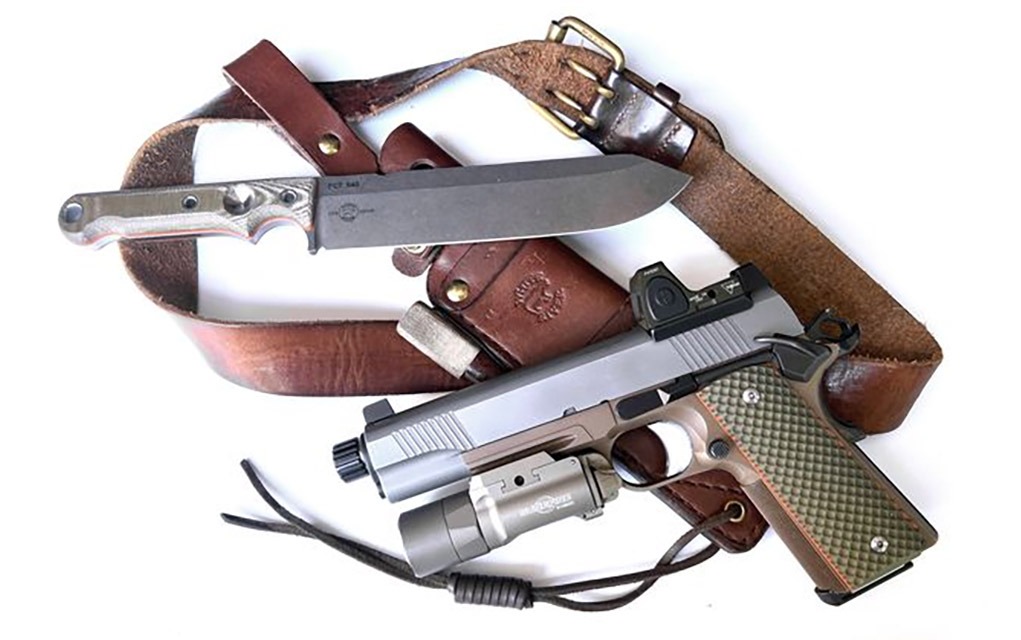
A Losing Game
While it seems sensational to strike targets with a pistol at 500 yards using an RMR like a mini precision rifle scope to dial in my hits, this is obviously well beyond the intention of any of this equipment. On merit of consistency alone, I’d say that the long-range distance for an optically equipped semi-automatic pistol chambered for common calibers is 200 yards on an 18×18-inch target. If you’re planning to hunt with a setup similar to this, a long shot is 60 yards. Even with powerful +P loads, most handgun ammunition runs out of gas at 100 yards on game.
So why do it? Why shoot a close-range handgun at 150 yards? Because understanding what a setup can do at that distance makes a much closer shot—say 50 yards—seem more like point-blank range.
Editor's Note: This article originally appeared in the October 2022 issue of Gun Digest the Magazine.
More On Pistol Red Dot Sights:

Next Step: Get your FREE Printable Target Pack
Enhance your shooting precision with our 62 MOA Targets, perfect for rifles and handguns. Crafted in collaboration with Storm Tactical for accuracy and versatility.
Subscribe to the Gun Digest email newsletter and get your downloadable target pack sent straight to your inbox. Stay updated with the latest firearms info in the industry.

![Best Concealed Carry Guns In 2025 [Field Tested] Wilson Combat EDC X9S 1](https://gundigest.com/wp-content/uploads/Wilson-Combat-EDC-X9S-1-324x160.jpg)


![Best 9mm Carbine: Affordable PCCs [Tested] Ruger Carbine Shooting](https://gundigest.com/wp-content/uploads/Ruger-Carbine-Shooting-100x70.jpg)
![Best AR-15: Top Options Available Today [Field Tested] Harrington and Richardson PSA XM177E2 feature](https://gundigest.com/wp-content/uploads/Harrington-and-Richardson-PSA-XM177E2-feature-100x70.jpg)

Point Blank Range: The maximum distance at which a hit can be scored on a target of specified size from the muzzle to that maximum distance. with a particular firearm and ammunition combination which is aimed at the target center
“Point Blank Range” is not “right in front of the gun.” That’s Hollywood BS that screenwriters – who are apparently more expert with firearms than everyone else – have sold to the public. Problem is, “everyone” bought it. Including you.
Handguns can be shot accurately at distances out to 200m. Go to any IHMSA silhouette match and you can see it first hand. I recently saw a first time silhouette shooter hit 19 out of 40 targets out to 100 yds using a Glock 34 in 9mm equipped with a red dot. That shooter was an experienced 3 gun shooter with a dot sighted at 25 yds. Handgun bullets don’t stop flying at 25 yards and drop to the ground. We shoot .22 LR and straight wall pistol cartridges out to 100 yards in smallbore and field pistol. Big bore is shot on full sized targets out to 200m. Some straight wall and most bottle necked cartridges for the larger targets. No disrespect, but IHMSA has been shot since 1975. This is not a new thing.